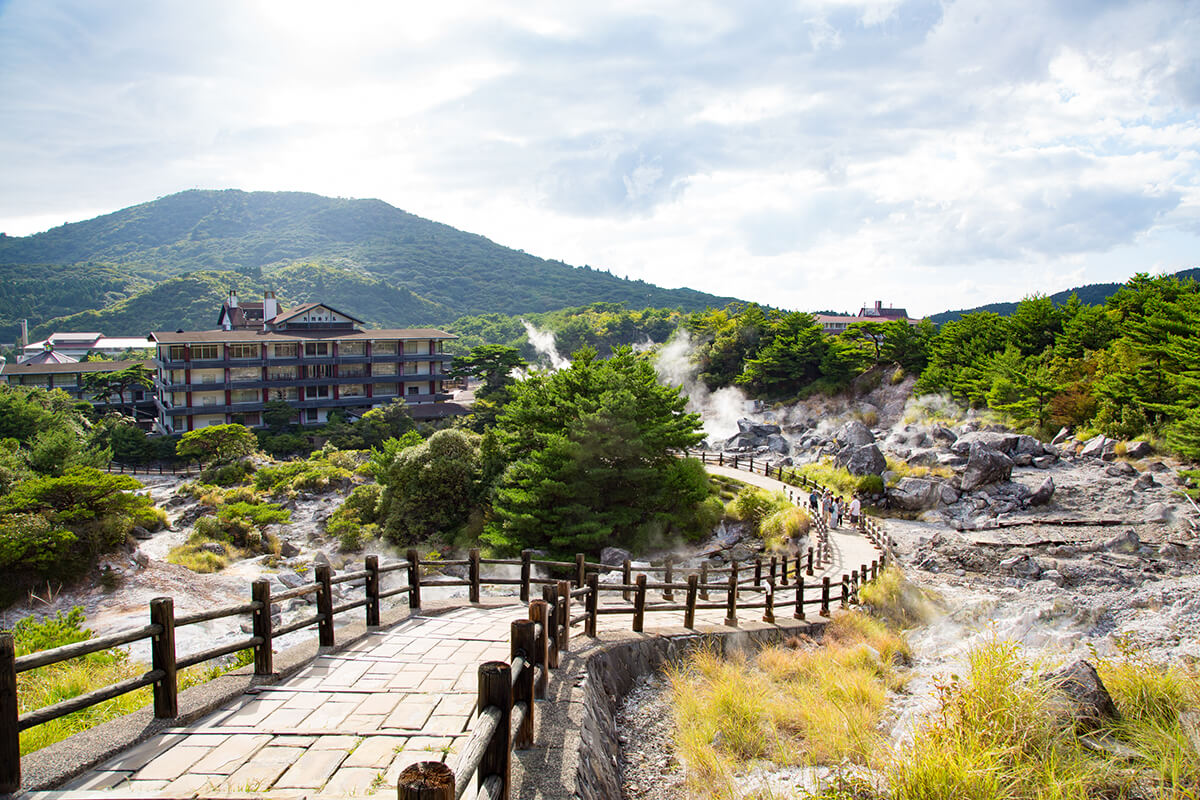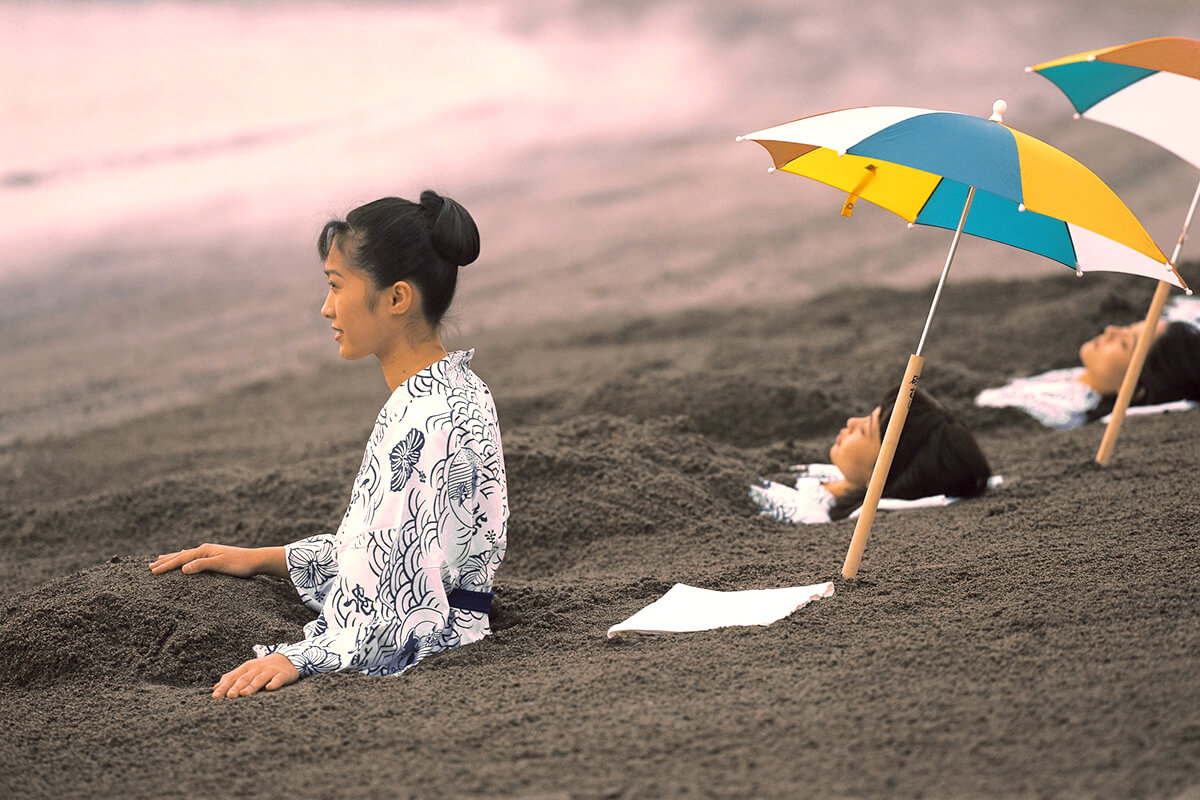IN HOT WATER

Volcanic activity in Japan, which sits atop the Pacific Ring of Fire, creates hot springs and geysers galore—more than 27,000, most far too hot for bathing. But there are nearly 3,000 springs, called onsen, where pleasantly warm, mineral-rich waters bubble up from beneath the earth and visitors can enjoy a relaxing soak. Bathing in Japan is more than a pleasant pastime. The ritual dates to the arrival of Buddhist monks (from China) in the sixth century and is considered essential, not only for cleansing the body but also for purifying the spirit and washing away the stresses of the day.
A place to soak can be as simple as a pool in a river blocked off with stones and as complex as a large-and-luxe public bathing facility with dining options and beauty treatments. The ultimate is booking into a traditional Japanese inn, called a ryokan, for an overnight stay and private hot springs bath. That’s the difference between onsen and ryokan; you can overnight at a ryokan.
Many of the best onsen are located on lush and mountainous Kyushu, Japan’s third-largest island. Here are a few to know:
Beppu Famous for its spectacular jigoku (dubbed “hell”) that can reach 212 degrees Fahrenheit. Each has its own character. Chinoike Jigoku (Blood Pond Hell) is a bright vermillion because of high levels of iron and magnesium. At Kamado Jigoku (Cooking Pot Hell), you can lunch on hard-boiled eggs and vegetables cooked by the hot spring’s steam.

Ibusuki Renowned for sunamushi (sand bathing). You wear a light cotton yukata and lie on the beach where an attendant covers you up to the neck with black sand. After 10 minutes or so, you emerge, warm and relaxed. Take a shower at the beach or explore nearby hot springs.
Yufuin Known for the picturesque mists that linger in the valley and over Lake Kinrin. Cafés, shops, and small hotels cluster around the lake and there’s a shrine at its southern end. Mount Yufu can be seen from many of the outdoor hot springs.
Unzen Formerly a popular summer resort for Nagasaki’s foreign residents in the early 20th century. Many of the historic hotels have outdoor hot springs pools with dazzling views of Mount Unzen.
ETIQUETTE
Check to see if the onsen you plan to visit allows tattoos—many don’t.
Rent towels at the door, remove shoes, and to wash, sit down, soap up, and ladle warm water over yourself with a wooden scoop. Leave clothes and a large towel in your locker; take the fig leaf–sized towel with you into the onsen pool area. Leave it at the side of the pool or put it atop your head as you’ll see most Japanese doing. In Japan it’s no big deal to be naked and no one is going to stare at you. So, slide up to your neck in soothing warm water, meditate, and find your zen.
GETTING TO KYUSHU
Travel by direct flight from Tokyo and Osaka in two hours or less. Japan’s high-speed Shinkansen takes about five hours.